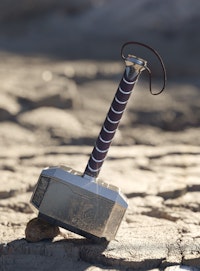Hardness
Based off of the system created by mineralogist Friedrich Mohs, the Mohs Scale of Hardness gives a tangible way to rank the respective hardness of minerals and gemstones. It assigns a number between 1 and 10 to represent the material’s resistance or ability to scratch, though the interval values are not equal to one another. A material can scratch the surface of those of the same or lower ranking, but is unable to affect materials of higher ranking. Diamond is the hardest material known to man, topping off the scale at a 10.

Mohs Hardness Rankings
- 1 – 2 can be scratched by a fingernail
- 2 can be scratched by copper
- 4 – 5 can be scratched by steel
- 6 – 8 can scratch glass
- 9 – 10 can cut glass
Refractive Index (RI)
As light shines into a gem, the material forces the beam to slow it’s rate of travel. A gem’s refractive index signifies the ratio of that speed against light’s speed in air. Refractive index differs between gemstones of separate chemical compositions, providing a consistent property for testing use and identification.
Specific Gravity (SG)
The densities of gem materials differ from one another. A gem’s specific gravity signifies the ratio of of it’s weight in comparison to that of an equal volume of water at 4 degrees centigrade. A higher ratio indicates a more dense and heavy matter. Using specific gravity, you differentiate the carat weights of gems that are the same size. Example – A 2.0 carat alexandrite (higher SG) would be the same size as a 1.4ct emerald (lower SG).

